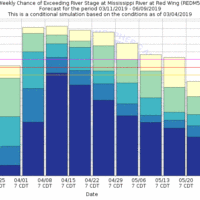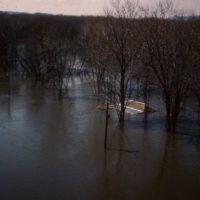ST. PAUL DISTRICT
News Release
March 13, 2019
MVP-PA-2019-029
Patrick Loch: 651-290-5679, 651-315-3887, [email protected]
George Stringham: 651-290-5201, 651-262-6804, [email protected]
Corps announces drawdowns plans at Mississippi River Headwaters reservoirs
ST. PAUL, Minn. – The U.S. Army Corps of Engineers, St. Paul District, continues to lower water elevations within its six Mississippi River Headwaters reservoirs in anticipation of spring snow melt.
All elevations given using National Geodetic Vertical Datum of 1929.
The Corps is lowering the elevation of Gull Lake, located near Brainerd, Minnesota. The current elevation is 1,193.16 feet, which is 10 inches below the middle of the normal summer range. Changing conditions will determine the final drawdown elevation, which would be no lower than 1,192.75 feet.
Elevation at the Cross Lake, near Crosslake, Minnesota, is currently at 1,277.93 feet and, based on winter snow pack, the reservoir will be drawn down to near elevation 1,277.3 feet.
Big Sandy Lake, near McGregor, Minnesota, is currently at 1,214.4 feet and will be drawn down to elevation 1,214.31 feet (one more inch). At that point the lake will be 2 feet lower than the middle of the normal summer range and it at its lowest level allowed, per Congressional legislation.
The pool elevation at Pokegama Lake, near Grand Rapids, Minnesota, is approximately 1,271.5 feet. The pool will be lowered to 1,270.42 feet.
Drawdowns are complete at Leech Lake, near Federal Dam, Minnesota, and Lake Winnibigoshish, near Deer River, Minnesota.
The pool at Leech Lake is currently 1,294.2 feet, with the reservoir drawn down 0.5 feet below normal summer range.
The pool at Lake Winnibigoshish is currently 1,297.51 feet, with the reservoir drawn down 0.68 feet below summer range.
Late winter snow surveys show an extensive snow pack, with more than enough water content to fill volume created by the winter drawdowns. Property (docks, boat lifts, etc.) at or near the normal summer lake level should be moved to higher elevations to be safe from rising reservoir levels this spring.




